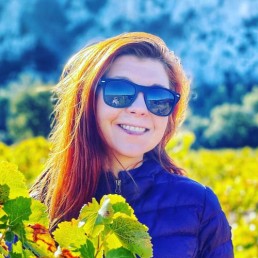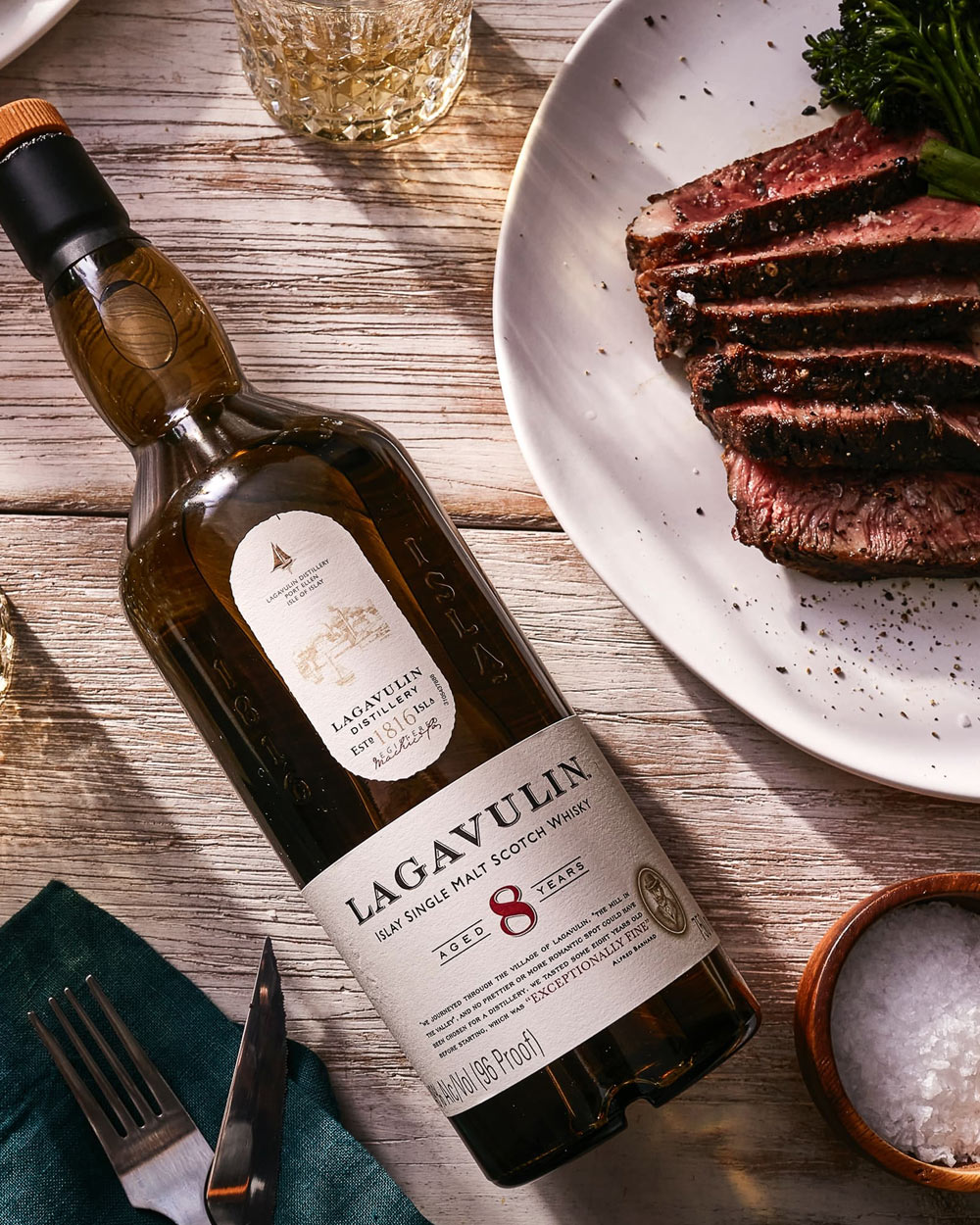From Jesus to Anthony Bourdain to Kim Gordon, a small subset of the most influential figures shaping the world’s beliefs and tastes are as devoted to testing the boundaries of decency and accepted cultural norms as they are in shaping them.
St. George Spirits occupies its own special icon/iconoclast niche in the wonderful world of whiskies. Specifically, American single malt.
“We reluctantly joined the American single malt commission,” says St. George Spirits’ master distiller Lance Winters, to the bemused displeasure of his devoted public relations rep, who urges him, “don’t say reluctantly!”
“As I said, we reluctantly joined the committee,” Winters says, grinning wryly. “I say reluctantly because I really feel like American single malt needs a little bit longer to explore what it should be before we quantify what it should be. But the reason we finally ended up joining is because the commission made the compelling point that if producers don’t define what American single malt is, then somebody else will.”
American Whiskey at a Crossroads
The American Single Malt Whiskey Commission (ASMWC) was launched in 2016 to do just that—define the category—in what it describes as a bid to “protect, educate, promote and ultimately grow it.”
There were nine founding members, but the Commission has grown its ranks to include 130, producing more than 200 whiskeys. In August, the notoriously mercurial and byzantine Alcohol and Tobacco Tax and Trade Bureau (TTB) released an official declaration defining the category, a signal that it is on its way to being rubber-stamped by the federal powers that be, most likely by year’s end.
Once the details are finalized, both producers and imbibers will know what American Single Malt means, and what they’re getting when their bottle is labeled as such.
The Commission’s official definition of American single malt is as follows: it must be made from 100% malted barley; distilled entirely at one distillery; mashed, distilled and matured in the U.S.; matured in oak casks of no more than 700 liters; distilled to no more than 160 proof, or 80% ABV; and bottled at a minimum of 80 proof, or 40% ABV.
Other types of whiskey—such as bourbon and rye—define what kinds of barrels can be used (new, charred, etc.), and these rules were designed to encourage experimentation and creativity, within broad bounds.
St. George Pioneered the Category
Founded in 1982, St. George started out as an eau de vie distillery. Winters joined in 1996, and soon, he and founder Jörg Rupf began distilling and aging their first single malt, which they released in 2000.
As a pioneer in the category, St. George had an outsized influence in the category’s trajectory.
“From its founding, St. George has been dedicated to expressing the flavors, scents and spirit of California,” notes head distiller and blender Dave Smith, who joined in 2005. “We partner with local farmers on everything from our brandies to our whiskies, and our goal is to create products that are unique to this time and place.”
“From its founding, St. George has been dedicated to expressing the flavors, scents and spirit of California.”
Dave Smith, St. George Spirits head distiller & blender
Everything, Smith adds, comes back to the eau de vie.
“Even our whiskeys are essentially eau de vies, with barley, instead of fruit,” Smith says.
The first line of St. George whiskeys was the Lot series, comprised of two-row pale barley, and chocolate, crystal, black patent and Bamberg malts, and released each year. Every year, Winters and Smith aim to amp up and clarify the precision of the expression, and the small-batch releases have become some of the most coveted and hard to get on the market.
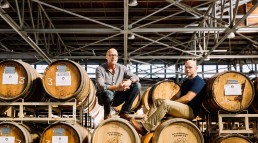
Evolution & Future
After issuing the Lot series, the dam of creativity broke over at St. George. Now, the distillery produces vodkas, absinthe, brandies, gins, liqueurs, brandies, shochu, Bruto Americano, and of course, eau de vie.
While that may seem like an excessive number of lines for two people to master and direct (Rupf retired in 2010), Winters reminds me, “it’s all rooted in distilling, with the goal of creating a sensory portrait of one specific place or idea. I think of each one of our products as an essay. Our line of spirits is a collection of those essays.”

Beyond the Lot series, Winters and Smith have created two whiskeys that, indeed, paint very distinct portraits.
The Breaking & Entering line, first released in 2011, is a more accessibly priced (about $30 vs the Lot’s $100) American blended whiskey. It is, as the name implies, sourced from multiple distilleries. Each bottle may include straight bourbons from Kentucky and Tennessee, plus straight rye from Tennessee, and malt whiskeys distilled in-house and aged in used and new barrels.
If the Lot series is the sophisticated and debonair, if slightly rebellious, maestro of single malt (think F. Scott Fitzgerald pre-insanity) Breaking & Entering is the seriously fun, offbeat but brilliant M.C. of the blend (think Aerosmith and DMC’s “Walk This Way.”)
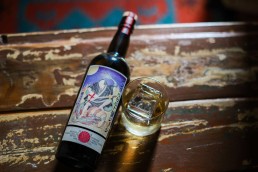
But the Baller is like everyone’s favorite baby—and the one St. George never meant to have.
“We created the Baller because we were obsessed with The Ramen Shop’s Tonkotsu ramen with pork chashu,” Winters says, of the Oakland mainstay created by three Chez Panisse alums. “There simply wasn’t a whiskey in our lineup that made a highball that paired well with their ramen, so we had to change that.”
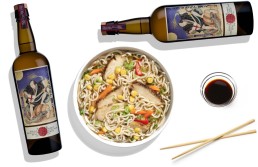
Like many of St. George’s most delicious concoctions, this one was born out of a very personal desire to taste a particular sliver of yummy. The Baller was right on the cusp of being bottled, but Winters performed a last-minute experiment that set them back 18 months.
“I rinsed a glass in umeshu and then tasted the batch again,” Winters recalled. “I couldn’t believe how much better it was. I realized that we had to tweak the process.”
The 100% American barley is aged in ex-bourbon and French oak wine casks, then finished in casks that previously held their house-made Ume plum liqueur barrels, emerging with an American-Japanese fusion whiskey that is as crisp and bright, yet bold, swaggering and smoky.
“I rinsed a glass in umeshu and then tasted the batch again,” Winters recalled. “I couldn’t believe how much better it was. I realized that we had to tweak the process.”
Lance Winters, St. George Spirits master distiller
In 2014, when the first micro-batch was released, 50 cases were produced to be served in The Ramen Shop’s highballs. The cocktail was so popular, and so many chefs and bartenders dine at The Ramen Shop, Winters and Smith soon found thirsty restaurateurs knocking on the door of the distillery. With a few years, they were sending out cases to other restaurants in California, and a few years after that, Baller rolled into the wider market, and is now one of their most critically beloved and popular bottlings at $50.
Baller, in many ways, shows how good American Single Malt can be to sticking to the rules, while breaking them in spirit. Three cheers for icons, especially when they’re also iconoclasts.
Kathleen Willcox writes about drinks, travel and culture from her home in Saratoga Springs, N.Y., and from the road, while exploring. She is keenly interested in sustainability issues, and the business of making ethical drinks and food. Her work appears regularly in Wine Searcher, Wine Enthusiast, Wine Industry Advisor and many other publications.


